
Hurricane Safety

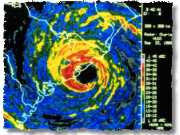 Hurricanes
Hurricanes
Hurricanes are certainly the stars of the disaster world. They get named, their every move is tracked, and they get lots of media attention. Everyone knows when one is coming for days ahead of landfall as the weather worsens, yet people are still killed. The fact is, lack of preparation and awareness big factors in large hurricane disasters which is sad since there is so much easy to access hurricane information available. Being prepared for these awesome storms is critical for people living in high risk areas to minimize damage and injury.
The destructive power of hurricanes is amazing. There is so much energy in one that it creates its own mini-disasters by spawning tornados and causing widespread flooding as well as landslides and general wind damage. Hurricane storms are rated in Categories to give an idea of their magnitude:
| Scale Number (Category) |
Sustained Winds (MPH) |
Damage | Storm Surge (Feet) |
| - | Less than 39 | Tropical Depression | 0-1 |
| - | 39-73 | Tropical Storm | 2-3 |
| 1 | 74-95 | Minimal: Unanchored mobile homes, vegetation and signs. | 4-5 |
| 2 | 96-110 | Moderate: All mobile homes, roofs, small crafts, flooding. | 6-8 |
| 3 | 111-130 | Extensive: Small buildings, low-lying roads cut off. | 9-12 |
| 4 | 131-155 | Extreme: Roofs destroyed, trees down, roads cut off, mobile homes destroyed. Beach homes flooded. | 13-18 |
| 5 | Over 155 | Catastrophic: Most buildings destroyed. Vegetation destroyed. Major roads cut off. Homes flooded. | Over 18 |
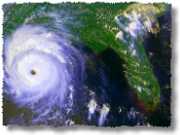 Hurricane Facts and Terms
Hurricane Facts and Terms
- Storm Watch - storm conditions are possible within the next 36 hours.
- Storm Warning - storm conditions are expected within then next 24 hours.
- Sustained Winds - wind measured at about 33 ft above the surface averaged for one minute.
- Tropical Depression, Tropical Storm, Hurricane - a low-pressure system of thunderstorms with a defined rotating surface circulation. The difference between depression, storm, and hurricane is the sustained wind speed.
- Storm Surge - a huge bulge of seawater forced on shore by winds from a storm. The high winds drive the sea ahead of them raising the water many feet across a front hundreds of miles wide.
- Storm Tide - the normal tide rises and falls as the moon revolves around the earth. The storm tide is the combination of the normal tide and the storm surge. If a hurricane hits with a 6 foot storm surge during a 1 foot normal high tide, the storm tide will be 7 feet.
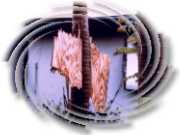 Before a Hurricane
Before a Hurricane
- Have a family emergency plan laid out and everyone trained on how it works.
- Plan a safe evacuation route and a back-up route to a destination about 40-50 miles inland.
- Install permanent storm shutters on all windows which will be useful in bad weather too. Or, board up windows with 5/8 inch plywood. Tape on windows does not help.
- Install roof straps to help minimize roof damage and hold your roof in place.
- Keep trees around your home trimmed and planted a safe distance away.
- Prepare a 'safe' room which is specially strengthened against wind.
- Clean out gutters so the heavy rainfall can run off.
- Fill your car with gas while the storm is still at least two days away.
- Bring outdoor furniture and items into a garage or house.
- Check your emergency survival kit, water supply, and food supply
- Close storm shutters
- Remove all art and mirrors from walls and heavy or breakable items from shelves.
- Protect heirlooms and valued items in the top of a closet on the ground floor in the center of the house - it has the best chance of surviving wind and flood damage. Wrap small items in plastic and store in a sealed plastic tub. Better yet, take them with you and evacuate!
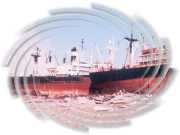 During a Hurricane
During a Hurricane
Evacuate if:
- you feel threatened and want to ensure your safety
- you are told to leave by authorities
- you live in a tall apartment building
- you live in a mobile trailer, even if it is fastened to ground
- you live near a waterway that may flood
When evacuating:
- Turn off water and electricity supply.
- Unplug all appliances.
- Call your out-of-town emergency contact and let them know you are leaving.
- Drive carefully and calmly. Avoid flooded roadways.
- When you arrive at your destination, call your contact.
If you do not evacuate, then:
- Turn your refrigerator to very cold - the electricity may go out and this will help keep food safe longer
- Fill extra containers with water to use after the storm since the main water supply may be contaminated or broken.
- Stay indoors
- Secure all external doors
- Close shades and drapes
- Close all internal doors for increased structural strength and wind resistance
- Seek shelter in a small interior room of the lowest level of your home
- Lie down under a sturdy table or desk
- Wait out the storm
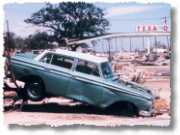 After a Hurricane
After a Hurricane
- If you evacuated, return when authorities have announced it is safe and the hurricane weather has subsided. Keep tuned to local radio or TV for details.
- Keep an eye open for all sorts of dangers:
- snakes, alligators, and other wild animals looking for shelter
- downed power lines
- washed out roadways
- flooded roads - don't drive over what you can't see!
- looters, bandits, and scammers - be suspicious of everyone you don't know, and don't put your family at risk.
- Check for damage to the structure of your home - before entering if you evacuated.
- Check for gas leaks and turn off the main gas valve if you smell gas or hear hissing.
- Do not use your main water source until you know it is safe. Have it tested.
- Treat all scratches and cuts immediately to prevent infection. Wash hands often and use an anti-bacterial such as Purell.
- If you home has water damage, turn off electricty and open all the windows and doors. Use fans to help remove moisture.
- Contact your insurance representative to make a claim and start the clean-up process.
- Throw out food that may have been ruined by water or lack of refrigeration.
- Clean, clean, clean - be prepared for a grueling task of many hours of cleaning.
A hurricane combines the destruction of a tornado and a flood - wind and water. So, your clean-up effort may be more difficult and more dangerous. Hurricane relief will also take time to reach you depending on your location, the weather, and the number of hurricane relief victims so you need to survive on your own for at least a few days and possibly longer. Some of the ongoing risks to keep in mind are:
- Disease - stay out of standing water as much as possible and wear rubber boots and gloves. Wash often and be careful when eating.
- Mold - drying out your home is critical to prevent mold from ruining furniture and structure. Remove furniture to the outdoors to dry. Use a bleach mixture to disinfect everything. Have your heating, ventilation, and air conditioning systems cleaned and checked before using.
- Carbon Monoxide - the odorless killer created by charcoal grills, generators, stoves, or any item that burns fuel. Use them only outside and well-ventilated.
- Food poisoning - only use food you know did not come in contact with raw water. Treat your water by boiling or chemical treatment. See water purification information for details.
- Bugs and animals - use DEET and other insect repellant to ward off mosquitos and friends. Stay away from animals and call authorities if needed.
- Driving - roadways are damaged, signals may not be working, and people are distracted. Watch out for road hazards and inattentive or stressed drivers.
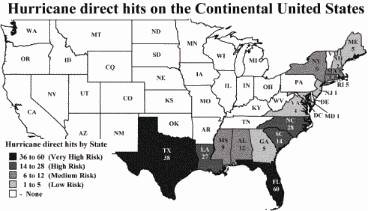
Hurricane preparedness needs to be part of your family's safety plan if you live in an area that has a hurricane season. Information about preparing for other disasters such as floods, tsunamis, and tornados will also benefit you. Relief workers will aid you, but you must be prepared to take care of your family until relief arrives.

Find Emergency and Disaster Info at EmergencyDude.com
